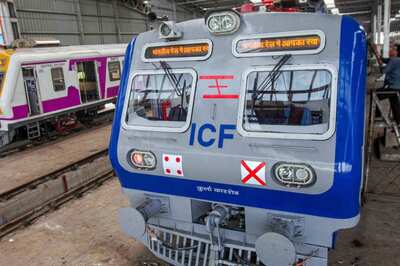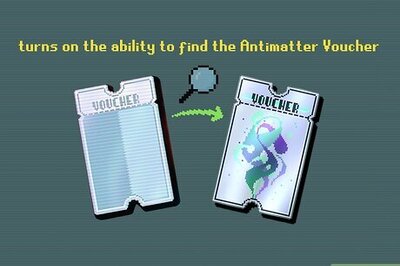
views
Dr. SV Subramanian of the Harvard Centre for Population and Development Studies and the Harvard TH Chan School of Public Health, et al (2023), have published a quantitative mid-line assessment of India’s progress on Sustainable Development Goal indicators in 707 districts, using the data from the National Family Health Surveys, 2016 and 2021. The assessment is based on 33 indicators that cover 9 of the 17 SDGs.
According to their assessment, India is not on target for 19 of the 33 SDGs indicators. These are in critical sectors like access to basic services, wasting and over-weight children, anaemia, child marriage, partner violence, tobacco use and modern contraceptive use. While India did very well in its pro-poor public welfare programmes and facilitated the coming out of multi-dimensional poverty for 415 million people between 2005-06 and 2019, it is a case of the glass being half full. The study points to a need for mid-course corrections.
The performance of the Aspirational Districts Programme (ADP) was also assessed based on the independent data and it does not appear that the aspirational districts on average, are performing better in meeting, the SDG targets other districts on majority of the indicators. The study finds no pattern to suggest that Aspirational Districts are more likely to meet the SDGs targets than other districts. There is no marked difference between an aspirational and any other district in the annual absolute change. The study also points out that the risk of not meeting the SDG targets appears concentrated in Madhya Pradesh, Chhattisgarh, Jharkhand, Bihar, Odisha, and many districts of Maharashtra and West Bengal.
For those like us who have tracked the ranking of villages and gram panchayats through the annual, community vetted, participatory, Mission Antyodaya Surveys, 2017 onwards, the finding comes as no surprise. A higher percentage of Southern Indian Gram Panchayats have higher scores in the 2017 and 2019 Gram Panchayat Ranking Surveys on the 48 indicators covering infrastructure, human development and economic activity. Field visits confirm the serious learning poverty challenge in schools that have opened after two years. The Covid impact on primary health and nutrition also needs to be factored in our journey to 2030.
While good progress has been registered in many sectors, there is a need to re-visit many initiatives in the light of the evidence. While doing so, it is important to learn from sectors where we have done well and understand the reasons for the success.
Electricity connection, rural roads, rural housing, rural sanitation, Jandhan Bank account for women, Ujjwala LPG connections for deprived households, Immunisation under Mission Indradhanush, have all registered major gains in the recent years as they form the core of the pro-poor public welfare.
Many of these programmes were a part of the Gram Swaraj Abhiyan in 63,974 purposively selected villages in two phases in 2018. The local government, women’s collectives, frontline workers, line departments, corporations, state and central Government functionaries, deprived households, were mobilised with a real time technology enabled monitoring system for every village. The whole of government and whole of society approach fully informed this thrust. The success of the Covid vaccination programme is also due to the same reason where the local to the national effort was all working for the same outcomes.
Our approach even in new initiatives such as Poshan Abhiyan, the Health and Wellness Centres, the Nipun Bharat Mission, continue to remain vertically aligned with departments rather than horizontally owned by the Panchayats, women’s collectives and frontline workers. Education, health, nutrition, skills, livelihoods, food security and diversity, incomes, employment, do not allow us the luxury of narrow departmentalism; outcomes elude us by such an approach.
The programmes of these sectors must be led by the local government with use of technology for effective real-time monitoring of outcomes, village wise. It is not good enough to collect data without using it effectively at the local level. Gadgets for distance learning will not fall like ‘manna from heaven’. If we want to promote blended learning, we will have to sort out the last mile of resources, both human and financial.
Everyone speaks of convergence but does not realise it happens best through decentralised, facility specific enablement. The five approaches of ‘community connect’, flexible untied financing, monitoring progress against agreed outcomes/standards, innovations in human resource engagement, improved management capacity through professional support, are the approaches that make convergence work. It involves surrendering power at higher levels in favour of local community institutions. In the sectors that we have challenges, we need to sit down with an open mind to see the extent of a whole of government and society approach that has been mainstreamed in the initiative. Our thrust must be on the strengthening of whatever that delivers on the last mile. Human resources at Panchayat level matters to outcomes. These mid-course changes will make the real difference.
Nutrition, learning outcomes, improved health outcomes, higher incomes, diversified livelihoods, require professionals willing to work in remote rural areas. The Deendayal Antyodaya Yojana National Rural Livelihood Mission (DAYNRLM) has demonstrated the power of professionals and a home-grown cadre of Community Resource Persons (CRPs) who are women and have fought poverty successfully and are now the leaders of social transformation in new clusters and regions.
Our approach to incrementally developing human resources for social development, needs a thrust to enable us to find teachers, health workers, and other frontline social development workers who are diligent and dedicated to make transformational change.
Professional support for capacity building requires civil society partnerships and evidence based approaches. Scientifically established benchmarks for reducing anaemia look at both food availability, its diversity, loss of blood due to frequent infections and diseases, and quality of care of women and girls. Absence of timeliness of interventions for minor ailments of an infant, often lead to increased wasting and stunting. The time to act is now. Change must show at household level and not merely in the media headlines.
The need to identify Panchayat specific social development gaps and intervene to make a difference is required across sectors. The latest round of Mission Antyodaya Survey 2023, undertaken by the Ministry of Panchayati Raj, has a total of 216 indicators that have localised the SDGs, right down to a Gram Panchayat level. Identifying the gap and having the flexibility to make a difference in a short period is what a seven-year Human Development Mission (Mission Manav Vikas – 2023 to 2030 the SDG target year) can achieve. The day a Panchayat leader to India’s Prime Minister start monitoring the same set of 20-30 indicators of SDG outcomes with the flexibility to remove the obstacles to transformation, there is no reason why we will not succeed.
We must realise that a community owned, technology driven, decentralised outcome focused system is our only hope; it will be incorrect to say that it will not need additional resources. We must make it available if we do not want to become old before we become rich. Around 18% of the 0-14 world population is in India. We must turn it into a dividend fully to be a developed India in 2047.
Amarjeet Sinha is a retired civil servant. The views expressed in this article are those of the author and do not represent the stand of this publication.
Read all the Latest Opinions here




















Comments
0 comment